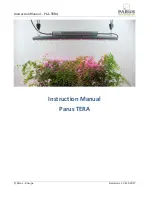
Operating Instructions
Chapter
4
M4000 Adv., Adv. A/P, Area
8010797/YT72/2016-02-19
© SICK AG • Industrial Safety Systems • Germany • All rights reserved
23
Subject to change without notice
Muting
4.1
Muting principle
Muting temporarily mutes the protection provided by a safety device. In this way it is possi-
ble to move material to or from a machine without the need to interrupt the work process.
During muting a differentiation is made between people and material with the aid of addi-
tional sensor signals. In the event of a valid muting condition the protective device is over-
ridden on the basis of a logical evaluation of these external sensor signals so that the ma-
terial to be transported can pass through the protective device. As soon as anything other
than material enters the hazardous area, the work process is interrupted.
In the example, the material moves from left to right on a conveyor belt . As soon as the
muting sensors A1 and A2 are activated , the protection provided by the ESPE protective
device is muted and the material can move into the hazardous area. As soon as the
muting sensors are clear again , the protection provided by the protective device is re-
activated.
4.1.1
Muting cycle
The muting cycle is the defined sequence of all processes that take place during muting.
The cycle starts when the first muting sensor is activated. The cycle ends when the last
muting sensor returns to its initial state (e.g. clear light path for optical sensors). Only then
is it possible to activate muting again.
Material can be transported several times during a muting cycle, if the muting condition is
maintained continuously, i.e. at least one pair of sensors remains activated continuously.
Exception: With the
Exit monitoring
function activated (see sections 4.2.3 and 4.2.4 from
page 30), multiple material transport within a muting cycle is not possible.
Fig. 14: Schematic
illustration of muting
A1
Hazardous area
A2
ESPE
Material
Means of transport
















































